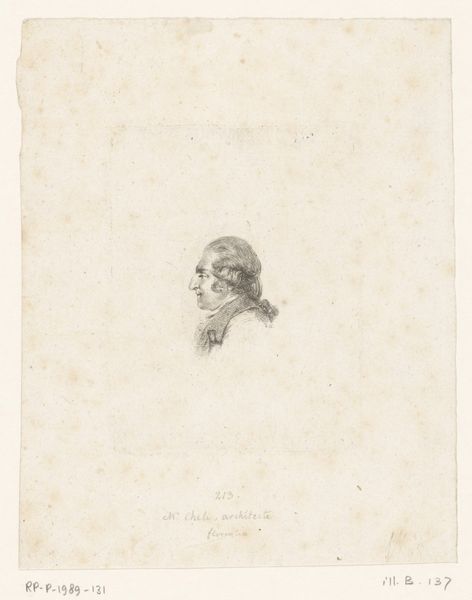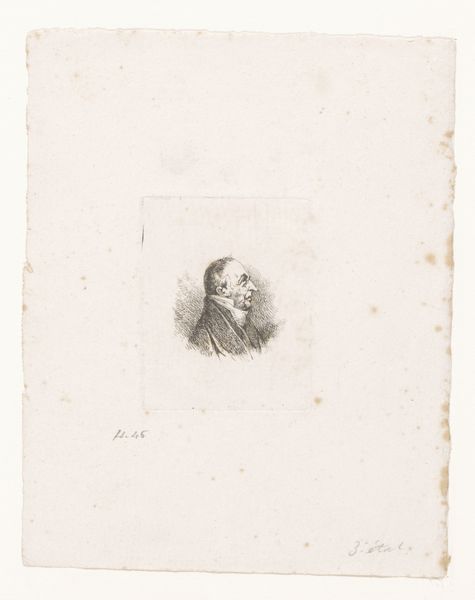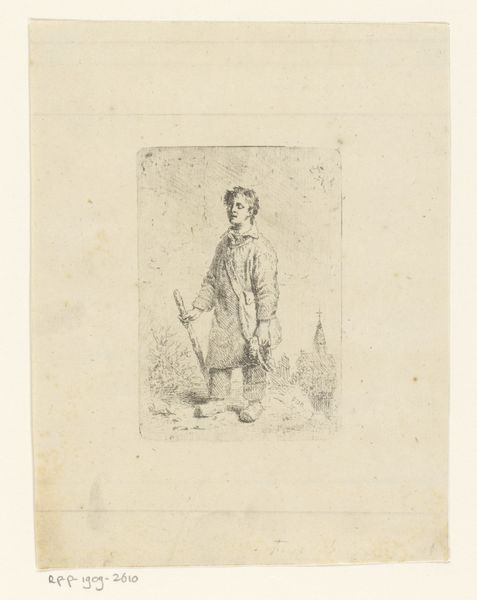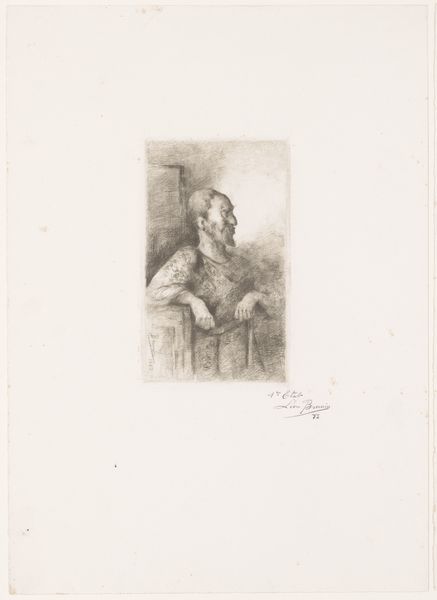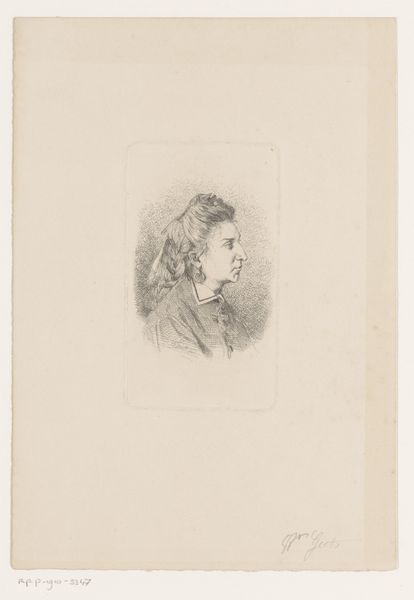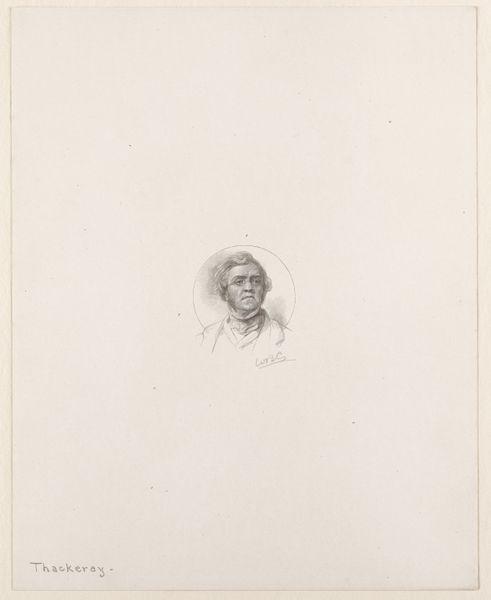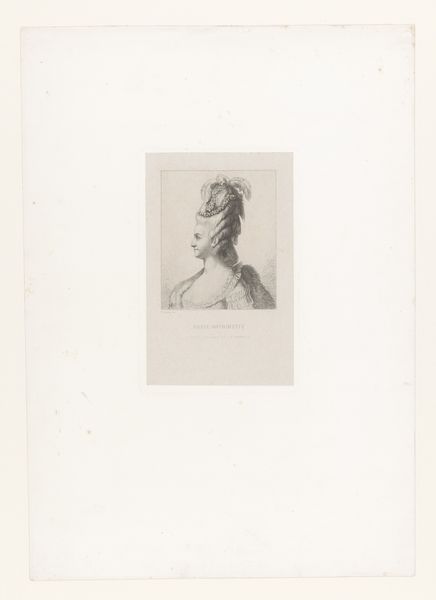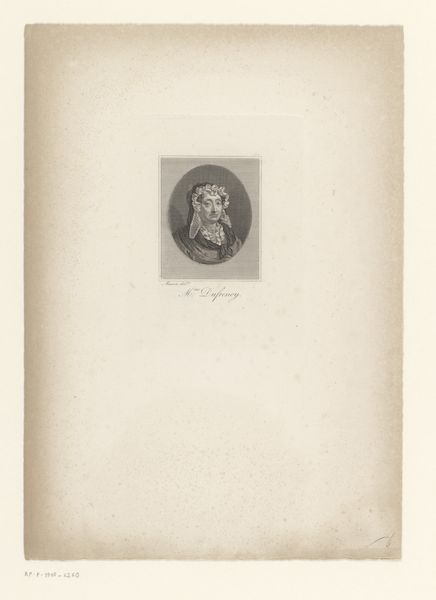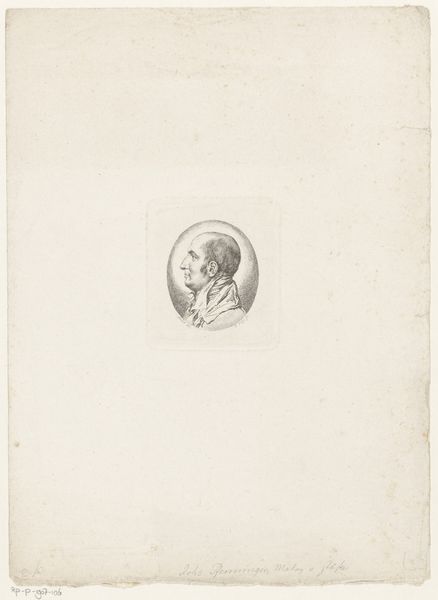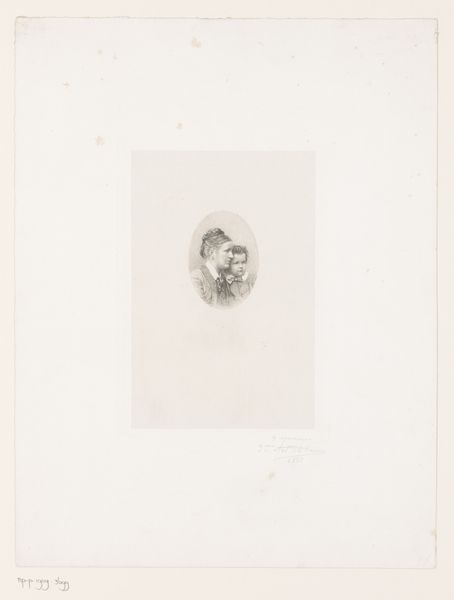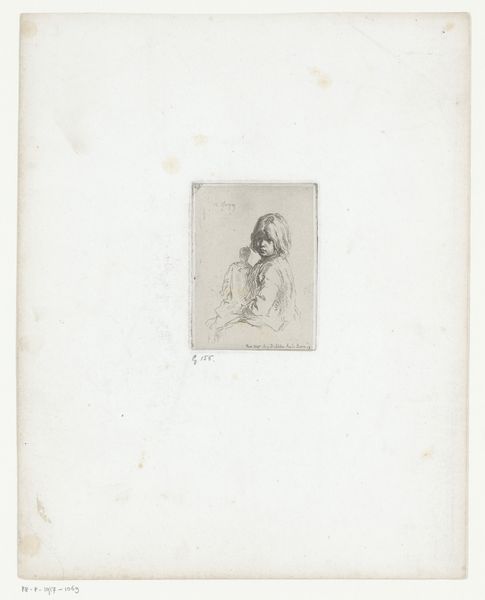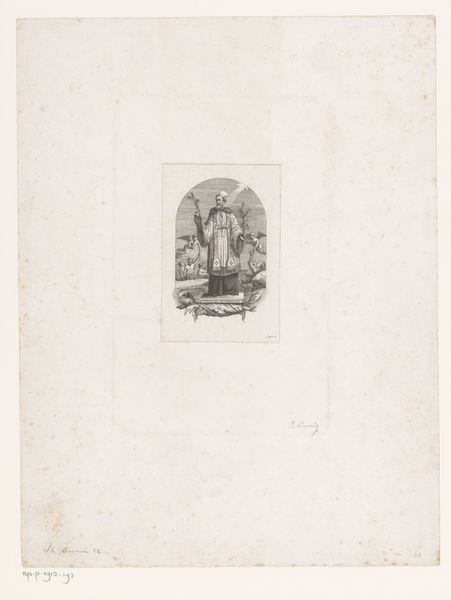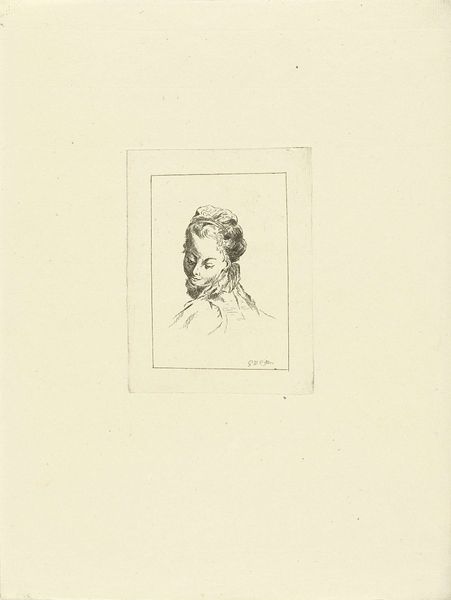
drawing, graphite
#
portrait
#
drawing
#
graphite
#
academic-art
#
realism
Dimensions: height 120 mm, width 100 mm
Copyright: Rijks Museum: Open Domain
This is Albert Dillens's "Portrait of an Unknown Cardinal," likely made using etching in the late 19th or early 20th century. The image is created by drawing through a waxy ground on a metal plate, which is then bitten by acid. This painstaking process allows for incredibly fine lines and detailed shading. Look closely, and you can see the textures created by the etching needle, and the different densities of lines. The very nature of etching, with its reliance on skilled labor and specialized techniques, reflects a particular moment in the history of art production. It bridges the gap between handcrafted artistry and mechanical reproduction, as prints could be made in multiples. This portrait, with its delicate lines and subtle tonal variations, invites us to consider the relationship between artistic skill, labor, and the distribution of images in society. By attending to the material and the making, we gain a richer understanding of the work’s social and cultural significance.
Comments
No comments
Be the first to comment and join the conversation on the ultimate creative platform.
